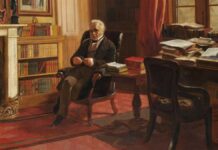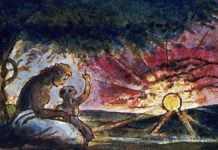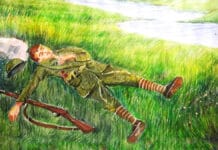Margaret Atwood, a prolific Canadian writer, is renowned for her novels, but her poetry also holds a significant place in modern literature. Her poems, spanning several decades, are characterised by their sharp observations on human nature, feminism, environmental concerns, and the interplay of myth and reality. Atwood’s poetry often explores themes of power, identity, and survival, with a voice that oscillates between personal intimacy and universal commentary.
Themes in Atwood’s Poetry
Feminism and Gender Roles
Atwood’s poetry frequently addresses the roles and experiences of women, challenging societal norms and exploring the complexities of female identity. She critiques patriarchal systems and delves into the tension between independence and societal expectations.
- In Spelling, Atwood reflects on the power of language as a tool for both liberation and oppression, particularly for women.
- Her poem This Is a Photograph of Me explores the erasure of women’s voices, blending themes of identity and invisibility.
Survival and Power Dynamics
Survival, a recurring theme in Atwood’s work, is evident in her poetry as she examines human resilience against external and internal struggles. She often portrays survival as a metaphor for power struggles in relationships, nature, or society.
- In Progressive Insanities of a Pioneer, Atwood critiques humanity’s attempts to dominate nature, illustrating the tension between survival and destruction.
- Poems like Marrying the Hangman confront power imbalances in relationships, revealing the sacrifices and compromises tied to survival.
Nature and the Environment
Atwood’s deep concern for the environment is reflected in her poetic exploration of humanity’s relationship with nature. She intertwines ecological concerns with themes of exploitation and reverence.
- In The Animals in That Country, Atwood examines the alienation between humans and animals, highlighting a loss of connection and respect for the natural world.
- Her poems often evoke vivid imagery of Canadian landscapes, capturing their beauty and harshness.
Myth, History, and Identity
Atwood frequently incorporates myths, archetypes, and historical references in her poetry to explore identity and the human condition. She reimagines traditional narratives to give voice to marginalised perspectives.
- In Siren Song, Atwood retells the Greek myth of the sirens, offering a fresh perspective that reveals the siren’s dissatisfaction with her role as a seductress.
- Her work often juxtaposes personal experiences with larger historical or mythical frameworks, emphasising the interplay between individual and collective identities.
Style and Structure
Use of Language
Atwood’s poetry is known for its clarity and precision. She employs a conversational yet lyrical tone, blending the ordinary with the extraordinary. Her imagery is both visceral and symbolic, often creating layered meanings.
Irony and Wit
Her poems often have sharp irony or biting wit, making them simultaneously thought-provoking and accessible. Atwood’s humour is subtle, usually laced with dark undertones.
Minimalism and Open Endings
With sparse, carefully chosen words, Atwood’s style often leans toward minimalism. Her poems frequently end on ambiguous notes, leaving readers to contemplate deeper meanings.
Notable Poetry Collections
The Circle Game (1966)
This collection won the Governor General’s Award and established Atwood’s reputation as a poet. It explores themes of childhood, identity, and the passage of time, with a sharp focus on human relationships.
Power Politics (1971)
In this collection, Atwood examines power dynamics in relationships, particularly between men and women. The poems are raw, emotional, and deeply introspective.
You Are Happy (1974)
This collection delves into themes of survival, loss, and renewal, blending personal and political insights. It features Siren Song, one of her most famous poems.
Morning in the Burned House (1995)
This collection is a reflection on mortality, grief, and memory. It carries a melancholy and acceptance as Atwood grapples with loss and ageing.
Dearly (2020)
Atwood’s first poetry collection in over a decade, Dearly, reflects on love, memory, and the passage of time. It is deeply personal, blending themes of ageing and loss with Atwood’s characteristic wit and wisdom.
Key Poems
This Is a Photograph of Me
A meditation on visibility and erasure, the poem describes a photograph where the speaker’s presence is overshadowed. It symbolises the marginalisation of women and the complexity of identity.
Siren Song
This poem reimagines the mythological siren, presenting her as a reluctant participant in the seduction of sailors. It explores themes of manipulation, power, and the burden of traditional roles.
Marrying the Hangman
Inspired by a historical account, this poem depicts a woman’s attempt to escape execution through marriage. It critiques power imbalances and societal constraints placed on women.
The Animals in That Country
A reflection on the loss of empathy between humans and animals, the poem critiques humanity’s exploitative relationship with nature.
Margaret Atwood’s poetry has solidified her place as one of the most important voices in contemporary literature. Her ability to blend personal, political, and mythical themes with sharp linguistic precision has inspired generations of readers and writers. Atwood’s poetry challenges us to rethink our relationships —with each other, with nature, and with ourselves —through a lens that is both critical and compassionate. Her work remains timeless, resonating with readers in an era increasingly marked by ecological, social, and personal challenges.




























